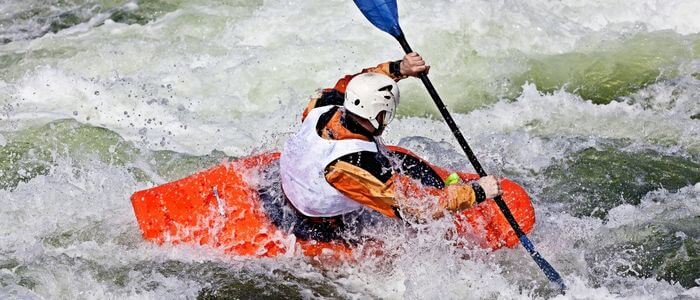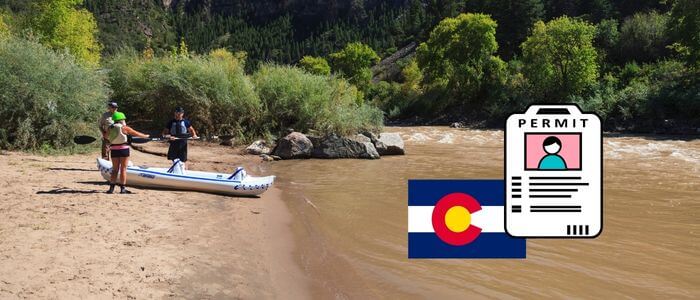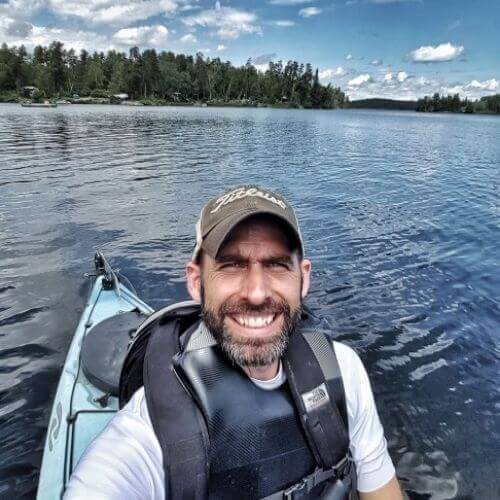
Kayaking is a popular pastime in Colorado, with its numerous rivers and lakes providing the perfect backdrop for a peaceful and scenic journey. However, many kayakers may wonder if they must register their kayaks in the state.
This article will explore the laws and regulations surrounding kayak registration in Colorado. Whether a seasoned kayaker or new to the sport, it’s important to understand the rules and regulations to ensure a safe and enjoyable experience on the water.
So, let’s take a closer look at kayak registration and other kayaking rules and regulations in Colorado.

No registration is required for kayaks in Colorado; however, kayakers need to be aware of the laws and guidelines to ensure safe and responsible use of the state’s waterways. From mandatory life jackets to respecting wildlife and private property, there are a few key things to keep in mind when kayaking in Colorado.
Following are some Kayaking Laws in Colorado
Vessels without a motor or sail are not required to be registered in Colorado. This includes kayaks and canoes.
It is illegal to operate a motorized vessel on the waters of Colorado without proper registration. This includes kayaks and canoes with motors. Failure to register a motorized kayak can result in fines or penalties.
Anyone under 14 years old cannot operate a motorboat on Colorado waters. It is not required to have a specific license to operate a kayak or canoe, but it is recommended to take a safety course or training before hitting the water.
In order to legally operate a motorized kayak or canoe in Colorado, the following age requirements must be met:
If you are under 14 years of age, you are not legally allowed to operate a motorized kayak or canoe in Colorado waters. If you are 14 or 15, you can legally operate a motorized kayak or canoe in Colorado waters only if you have completed a boating safety course and have a valid boater’s safety certificate.
If you are 16 or older, you can legally operate a motorized kayak or canoe in Colorado waters without additional requirements.
In Colorado, operating a vessel under the influence of alcohol or controlled substances is illegal and considered Boating Under the Influence (BUI). This includes having a blood alcohol level of 0.08% or being unable to safely operate a vessel due to the influence of a controlled substance. BUI is considered the same as Driving Under the Influence (DUI) and is punishable by similar penalties.
According to the Boating Statutes and Regulations of Colorado Parks and Wildlife, a BUI is usually a crime. For a first offense, these are the punishments:
Following is a detailed guide about kayaking lights laws.
All recreational motor-powered vessels less than 39 feet 4 inches (12 meters) long must display red and green sidelights and a 360-degree all-around white stern light. These lights must be displayed between sunrise and sunset and during limited visibility.
All hand-propelled vessels (under oars) must have a lantern or flashlight to show one white light to prevent collisions. It is important to note that flashing red or blue lights are reserved for use by law enforcement.
Lastly, all vessels less than 20 meters (65′ 8″) in length must display one all-around white light at anchor.
It is required by law for all kayaks to have at least one personal flotation device (PFD) on board for each person. These PFDs must be correctly sized, in good condition, and readily accessible.
Additionally, it is illegal to operate a vessel without children under 13 wearing a U.S. Coast Guard-approved PFD. For kayaks that are 16 feet or older, it is also mandatory to have one throwable Type IV USCG-approved PFD on board. There are no exceptions for larger kayaks or canoes.
It is not necessary to have a fire extinguisher on a trolling kayak. According to regulations, outboard pleasure boats less than 26 feet in length do not need a fire extinguisher. As long as they have not permanently installed enclosed fuel tanks, spaces for explosive or flammable vapors to collect closed living spaces, or closed sewage compartments.
Most likely, your kayak or canoe with a trolling engine needs these features, making it unnecessary to have a fire extinguisher.
Following is a detailed guide about kayaking sounding devices laws.
When kayaking in Colorado, it is required to have a sound-producing device on board for signaling purposes. This device can be operated by mouth, hand, or power and must be able to produce navigational signals according to the rules of the road.
It is essential to carry a sounding device due to potentially reduced visibility in fog or darkness, the small size of most kayaks and paddle boards, and the ability to signal intentions or call for help. A whistle attached to your flotation device in an easily accessible location is a practical and convenient option for paddlers.
All boats must have night signaling equipment while operating during the night. Most boats are also required to have day signaling equipment, except for small recreational boats under 16 feet, non-motorized sailboats under 26 feet, and manually powered boats such as kayaks and canoes.
Here are some general safety guidelines for a safe kayaking adventure.
Following are some river safety guidelines for kayaking that can help you stay safe:
Kayaks and vessels propelled by paddles in Colorado do not need to be registered with the state. However, kayakers need to familiarize themselves with the state’s boating laws and regulations to ensure a safe and enjoyable experience on the water.
Additionally, kayakers should also consider obtaining liability insurance to protect themselves in case of accidents or damages. By following these guidelines and practicing safe kayaking habits, kayakers can enjoy Colorado’s beautiful waters without legal complications.

Hey there kayak lovers! I’m Jay Schwartz, the author here at Kayak Guidance! You know water sports – you know me! My life is all about it. Kayaking, Paddleboarding, Fishing, Snorkeling and so much more. I love to share my passion and knowledge with all of you.

Hey there kayak lovers! I’m Jay Schwartz, the author here at Kayak Guidance! You know water sports – you know me! My life is all about it. Kayaking, Paddleboarding, Fishing, Snorkeling and so much more. I love to share my passion and knowledge with all of you.

Welcome to KayakGuidance.com! If you’re looking to have some fun outdoor water adventures, then you have come to the right place. We help our readers find the best kayaks and water related equipment to help you have the best time of your life whenever you are engaging in water activities.
This site is a participant in the Amazon services LLC associates program, an affiliate advertising program designed to provide a means for sites to earn advertising fees by advertising and linking to Amazon.com.